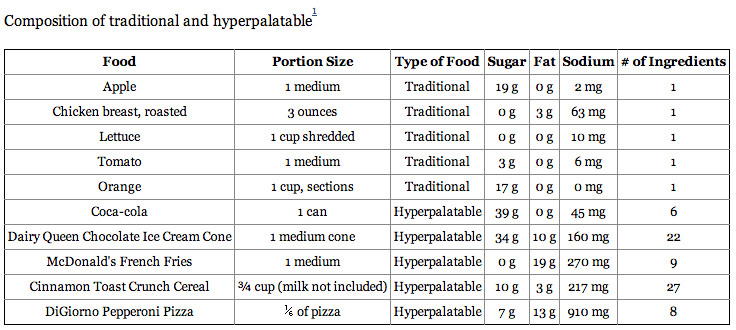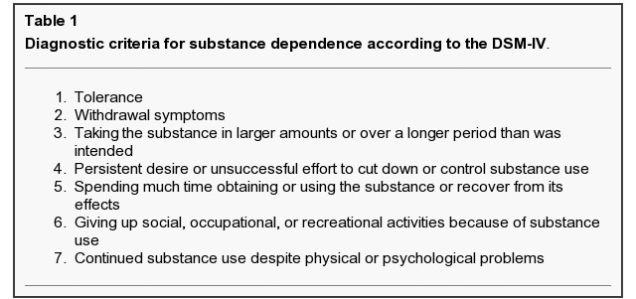Our food environment has changed dramatically over the years, most notably through the introduction of so-called "hyperpalatable" foods. These foods are deliberately engineered in such a way that they surpass the reward properties of traditional foods, such as vegetables, fruits, and nuts. Food chemists achieve this by suffusing products with increased levels of fat, sugar, flavors, and food additives.
Conditioned hypereating
David A. Kessler, author of The End of Overeating: Taking Control of the Insatiable American Appetite and former head of the FDA, claims that the food industry has combined and created foods in a way that taps into our brain circuitry, thus stimulating our desire for more. On their own, these ingredients aren't particularly potent, but when combined in specific ways, they tap into the brain's reward system, creating a feedback loop that stimulates our desire to eat and leaves us wanting more - even when we're full.
As Kessler told the New York Times, restaurant chains like Chili's cook up "hyper-palatable food that requires little chewing and goes down easily," while a Snickers bar is "extraordinarily well engineered." As we chew it, he says, the sugar dissolves, the fat melts and the caramel traps the peanuts so the entire combination of flavors is blissfully experienced in the mouth at the same time.
Eventually, the experience of eating impossibly delicious foods results in what Kessler describes as "conditioned hypereating." When we consume enjoyable sugary and fatty foods, it stimulates endorphins in our brains - chemicals that signal a pleasurable experience. In turn, and in Pavlovian fashion, these chemicals stimulate us to eat more of that type of food, while also calming us down and making us feel good.
But is it really addiction?
Conditioned hypereating sounds suspiciously similar to what we might call food addiction. And indeed, studies have shown that hyperpalatable foods may be capable of triggering an addictive process - one that's been postulated as a possible cause of the obesity epidemic.
But is it fair or reasonable to categorize food - something we need to keep us alive - alongside such things as illicit drugs, alcohol, and gambling? Some scientists say yes.
Last year, for example, neuroscientists from Connecticut College claimed that Oreo cookies are more addictive than cocaine. The researchers came to this conclusion after measuring a protein called c-Fos in the brains of rats. They found that the cookies activated more neurons in the accumbens - a region of the brain associated with pleasure, and studied for its role in addiction and reward-processing - than addictive substances like cocaine. Not surprisingly, the researchers were harshly criticized for suggesting that something as apparently benign as an Oreo cookie could be compared to a notorious party drug.
These concerns aside, evidence is mounting in support of the idea that food addiction is actually a thing.
It's known, for example, that food cues and consumption activates neurocircuitry, such as the meso-cortico-limbic pathways, implicated in drug addition.
In addition, work done in Bart Hoebel's lab at Princeton University have shown that rats overeating a sugar solution develop many behaviors and changes in the brain that are consistent with the effects of drug abuse, including withdrawal symptoms. Other studies support these findings, suggesting a reward dysfunction linked to addiction in rats who overeat hyperpalatable foods. Importantly, much of this compares reasonably well to humans, including cravings, continued use despite negative consequences, and diminished control of consumption. On the face of it, food addiction certainly exhibits all the hallmarks of conventional forms of addiction.
As noted by Nicole Avena and Mark Gold in a short-paper on the effects of sugars and fats on hedonic overeating, many of these "studies are supported by clinical research showing similarities in the effects of increased body weight or obesity and abused drugs on brain dopamine systems, as well as the manifestation of behaviors indicative of addiction."
Importantly, a relationship has been found to exist between binge eating-related disorders and addiction-like eating habits facilitated by the consumption of hyperpalatable foods. As summarized by addiction expert Adrian Meule:
In humans, increasing evidence suggests that individuals with binge eating-related disorders, i.e., bulimia nervosa (BN), binge eating disorder (BED), and obesity, experience behavioral symptoms and neurochemical changes that are highly comparable to other addictive behaviors. Moreover, increased prevalence of drug use can be found in BN and BED, but not in anorexia nervosa. In recent years, neuroendocrine pathways have been identified that are involved in both drug- and food-seeking behaviors. Specifically, appetite-regulating peptides like ghrelin, neuropeptide Y, orexin, or leptin have also been associated with craving for alcohol or tobacco. On a neurochemical level, reduced striatal D2 receptor availability has been found in obese patients similar to patients with substance use.In light of this evidence, some researchers are suggesting that "food addiction' join other non-drug addictions, such as sexual compulsivity and gambling.
Tackling the Problem
Though the addictive potential of foods continues to be debated, a number of strategies have been proposed to address the situation. Back in 2011, Ashley Gearhardt and colleagues reviewed some policy and public health strategies that have proven effective in reducing the impact of addictive substances. They concluded that:
Corporate responsibility, public health approaches, environmental change, and global efforts all seem essential in reducing food- and substance-related problems. Such approaches could be enacted in conjunction with individual-focused behavioral and pharmacological efforts that could also benefit from considering similarities between food-related conditions like obesity and drug addiction. Ignoring the analogous neural and behavioral effects of foods and drugs of abuse may result in a substantial loss of time, resources, and lives, as we rediscover lessons learned in reducing the impact of addictive substances.Amongst their many recommendations, the researchers proposed that hyperpalatable foods be taxed like cigarettes, have their accessibility reduced (e.g. removal of vending machines from specific locations), and that manufacturers be limited in terms of marketing and sales (e.g. by not allowing certain products to alter the food environments of developing nations). It has been shown, for example, that obesity rates in countries such as France and the United Kingdom have been rising in parallel with increases in the availability of highly processed foods and fast-food chains.
Lastly, by recognizing and appreciating the neurological underpinnings of overeating, researchers will be encouraged to find new ways of improving treatments, while policy makers will have added support for implementing broader and more impactful health policies.
Primary sources: NIH: Can Food be Addictive? Public Health and Policy Implications | NIH: How Prevalent is "Food Addiction?" | Addiction: Food and Addiction - Sugars, Fats, and Hedonic Overeating | PLOS: Public Views on Food Addiction and Obesity: Implications for Policy and Treatment.






Reader Comments
to our Newsletter